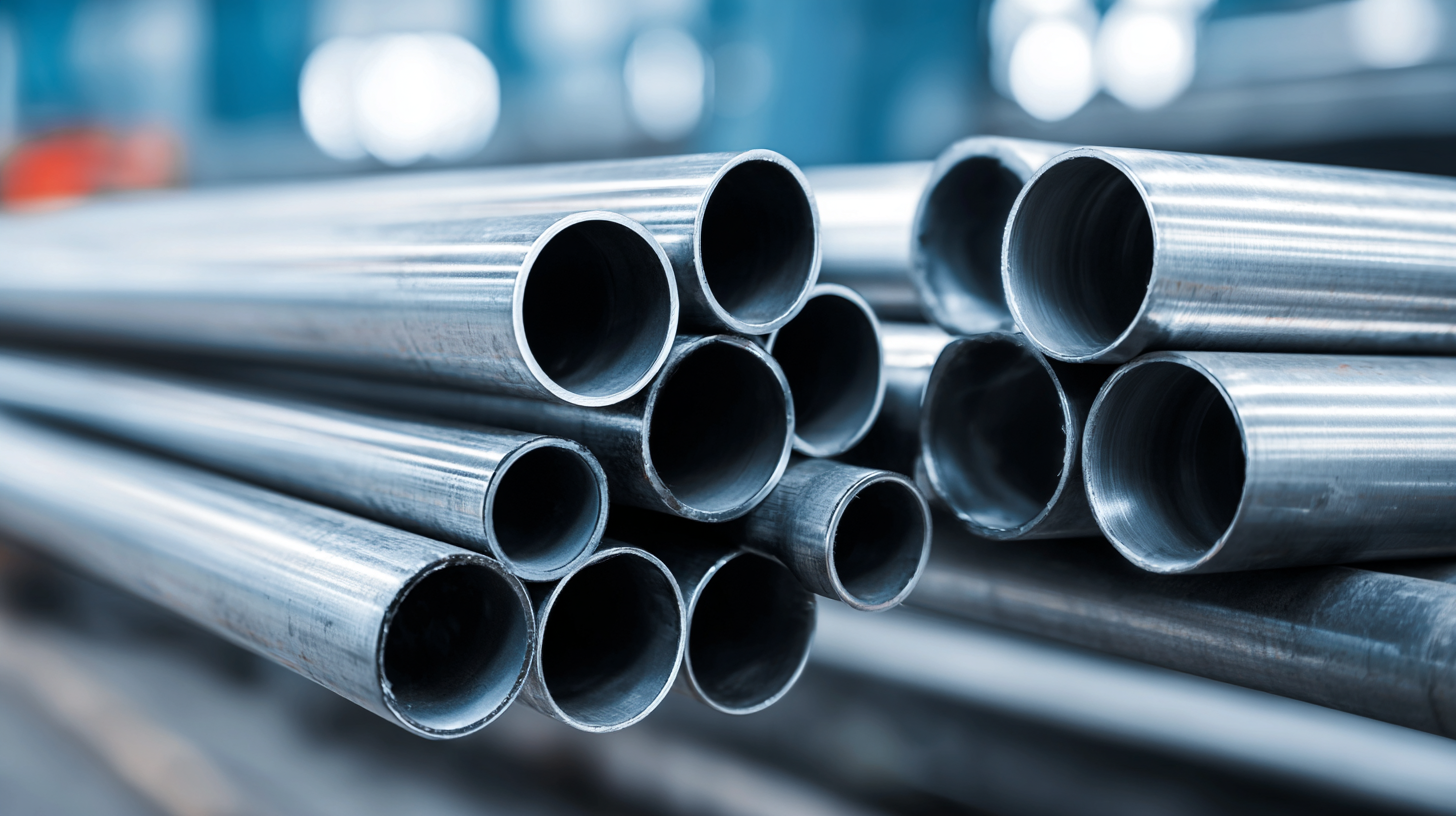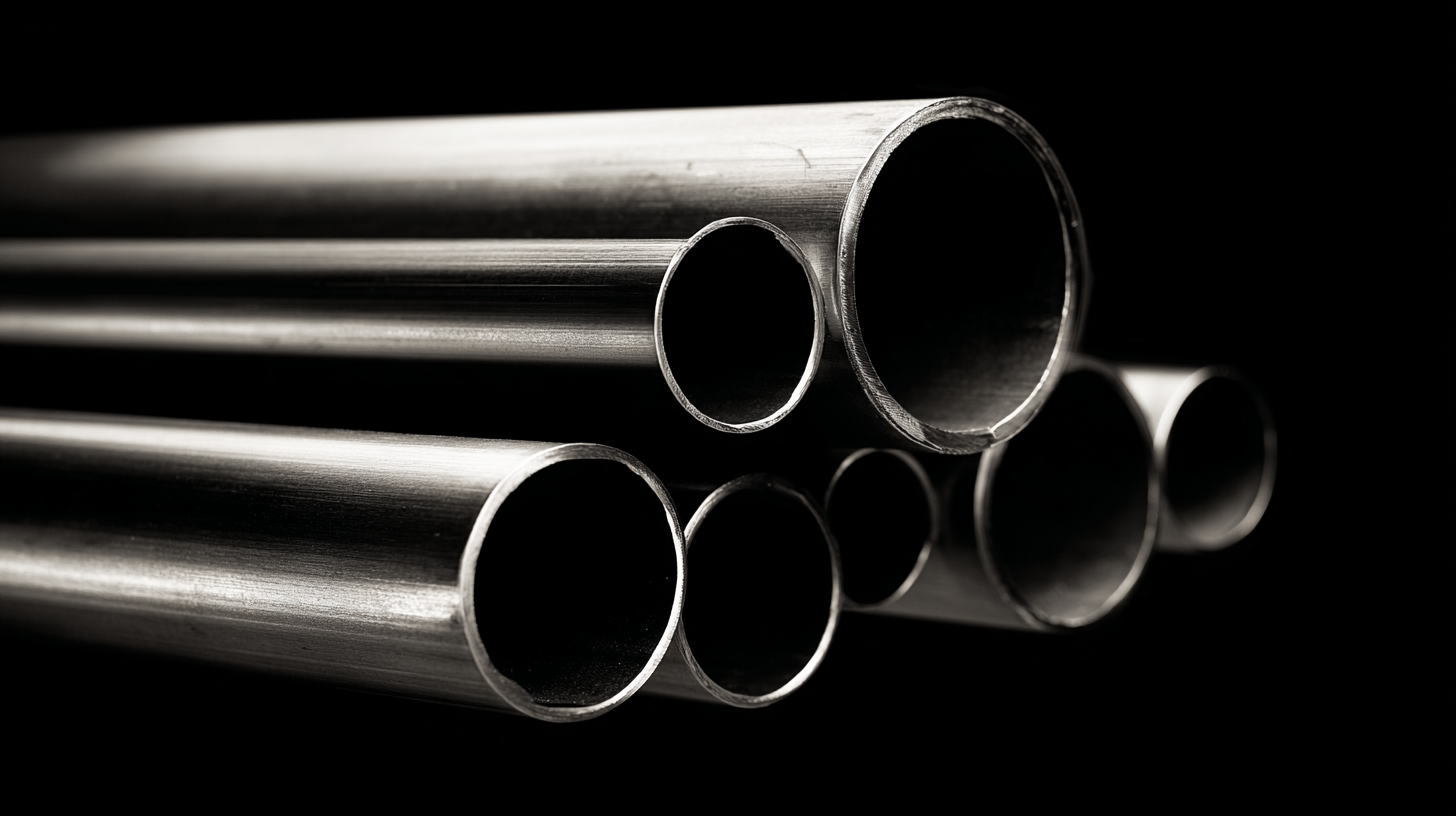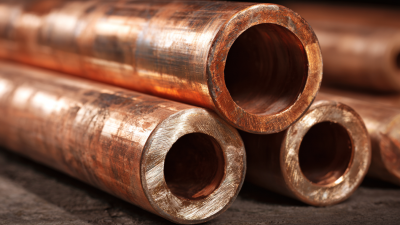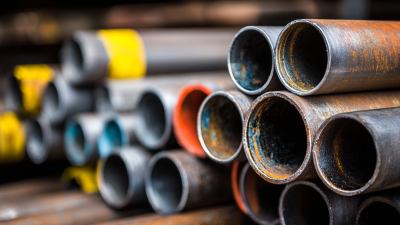How to Choose the Right Stainless Steel Pipe for Your Project Needs
Selecting the appropriate stainless steel pipe for your project is crucial to ensure
optimal performance and longevity. With a wide range of options available, from varying grades to different sizes and wall thicknesses, understanding the specific requirements of your application is essential.
 Stainless steel pipes are known for their resistance to corrosion, strength, and versatility, making them ideal for a multitude of uses across various industries, from construction to automotive. In this guide, we will explore the key factors to consider when choosing a stainless steel pipe, including material specifications, environmental conditions, and project needs. By gaining insight into these elements, you can make informed decisions that align perfectly with your project goals and ensure the reliability and efficiency of your piping systems.
Stainless steel pipes are known for their resistance to corrosion, strength, and versatility, making them ideal for a multitude of uses across various industries, from construction to automotive. In this guide, we will explore the key factors to consider when choosing a stainless steel pipe, including material specifications, environmental conditions, and project needs. By gaining insight into these elements, you can make informed decisions that align perfectly with your project goals and ensure the reliability and efficiency of your piping systems.
Understanding Different Types of Stainless Steel Pipes and Their Applications
 When choosing the right stainless steel pipes for your project needs, it’s essential to understand the various types available and their specific applications. For instance, duplex stainless steel, such as AISI 2205, is noted for its excellent corrosion resistance and strength, making it ideal for marine applications. According to recent data, this type of steel is not only weldable but also offers superior machinability and surfacing options, making it highly versatile for different environments.
When choosing the right stainless steel pipes for your project needs, it’s essential to understand the various types available and their specific applications. For instance, duplex stainless steel, such as AISI 2205, is noted for its excellent corrosion resistance and strength, making it ideal for marine applications. According to recent data, this type of steel is not only weldable but also offers superior machinability and surfacing options, making it highly versatile for different environments.
Moreover, it’s crucial to consider standards such as ASME B31.3, which governs the design and construction of piping systems in industrial settings. Adhering to these guidelines ensures safety and technical performance, particularly when managing critical factors like residual stresses in piping that could influence leak-before-break scenarios. In applications sensitive to leak rates, such as biogas production systems, selecting the proper stainless steel grade that aligns with specific service conditions can significantly enhance system reliability and efficiency. This careful consideration can ultimately lead to more sustainable and economically viable project outcomes.
Key Factors to Consider When Selecting Stainless Steel Pipe Sizes
When selecting stainless steel pipe sizes for your project, several key factors come into play that can significantly impact both performance and cost-effectiveness. One of the most critical considerations is the pipe diameter, which directly affects flow rate and pressure loss in the system. According to the American Society of Mechanical Engineers (ASME), an increase in diameter can enhance flow efficiency, particularly in larger systems where high volumes of fluid must be transported. For example, moving from a 2-inch pipe to a 4-inch pipe can potentially double the flow capacity, but it is essential to analyze the application's specific requirements to avoid over-engineering or under-sizing.

Another important factor is the wall thickness of the pipe, which influences its strength and durability. The Stainless Steel Pipe Association (SSPA) emphasizes that selecting the appropriate wall thickness ensures that the pipe can withstand the operational pressures and environmental conditions it will encounter. For instance, in corrosive environments, opting for a thicker wall can help maintain structural integrity over time while minimizing maintenance costs. Furthermore, compliance with industry standards, such as ASTM specifications, is crucial, as it helps guarantee that the selected pipe will meet the necessary safety and performance requirements for your project.
Identifying Corrosion Resistance Needs for Your Stainless Steel Pipe Projects
When selecting stainless steel pipes for your project, understanding the specific corrosion resistance needs is paramount. Stainless steel is renowned for its durability, but its performance against corrosion can vary significantly with different grades. According to a report by the International Stainless Steel Forum, the most commonly used grades, such as 304 and 316, exhibit notable differences, particularly in hostile environments. Grade 316, for instance, which contains molybdenum, offers superior resistance to chloride-induced pitting and is preferable in marine applications.
In addition, environmental factors play a critical role in corrosion performance. A study published by ASTM International indicates that exposure to high humidity and saline conditions can drastically reduce the lifespan of less resistant stainless steel grades. For projects in such challenging environments, opting for higher-grade alloys, such as 317 or 904L, may be necessary. These materials not only withstand corrosive elements but also contribute to long-term cost savings by minimizing maintenance and replacement needs. Understanding these nuances helps in selecting the right stainless steel pipe that aligns with your project's specific corrosion resistance requirements.
Corrosion Resistance of Different Stainless Steel Grades
This bar chart illustrates the corrosion resistance ratings of various stainless steel grades based on standard tests. The ratings provide insight into which grade may be the most suitable for your project needs.
Evaluating Pipe Specifications: Pressure Ratings and Temperature Limits
 When selecting the right stainless steel pipe for your project, understanding the pressure ratings and temperature limits is crucial. Pressure ratings determine the maximum pressure a pipe can withstand under certain conditions, which is essential for ensuring safety and performance in various applications. It's important to consult the specifications provided by manufacturers, as different grades of stainless steel can have varying pressure capabilities.
When selecting the right stainless steel pipe for your project, understanding the pressure ratings and temperature limits is crucial. Pressure ratings determine the maximum pressure a pipe can withstand under certain conditions, which is essential for ensuring safety and performance in various applications. It's important to consult the specifications provided by manufacturers, as different grades of stainless steel can have varying pressure capabilities.
Temperature limits also play a significant role in material selection. Stainless steel pipes can be designed to operate in high-temperature environments, making them suitable for applications such as chemical processing or power generation. However, exceeding these limits can lead to material failure. Always refer to the ASTM standards relevant to your specific stainless steel grade for detailed information on temperature resilience.
Tips: When evaluating pipes, consider conducting a thorough risk assessment to identify potential pressure and temperature extremes in your system. Additionally, don’t hesitate to consult with industry experts or engineers for personalized recommendations based on your project requirements. Always look for third-party certifications to ensure the integrity of your selected pipes.
Cost Considerations and Budgeting for Stainless Steel Pipe Purchases
When budgeting for stainless steel pipe purchases, it's essential to consider not only the initial material cost but also the long-term value and performance of the product. According to a report from the Global Stainless Steel Market Research, the price of stainless steel has experienced fluctuations but tends to average around $1,500 to $3,000 per ton depending on the grade and market conditions. Selecting the right stainless steel grade—such as 304 or 316—can significantly impact the overall cost, as higher-grade materials generally come with a premium price tag.
Another critical factor in budgeting is the cost of maintenance and longevity of stainless steel pipes. A study by the International Stainless Steel Forum indicates that the lifespan of stainless steel pipes is significantly longer than that of other materials, often exceeding 30 years with proper care. This durability can reduce replacement and repair costs over time, ultimately leading to lower total ownership costs. Additionally, when comparing the initial investment with future savings on maintenance and replacement, stainless steel often proves to be a cost-effective choice for many projects. Thus, understanding these cost considerations will help you make informed decisions aligned with your project's financial parameters.

Home
About Us
Products
Carbon & Carbon Alloy Steel
Stainless Steel
Copper & Nickel Alloy
Heat Efficiency Tubes
Pipe Fittings
Pipe Flanges
Gasket, Stud Bolt &Nut
Industrial Valves
Tech & Service
Blog
Contact Us


 Stainless steel pipes are known for their
Stainless steel pipes are known for their  When choosing the right stainless steel pipes for your project needs, it’s essential to understand the various types available and their specific applications. For instance, duplex stainless steel, such as AISI 2205, is noted for its
When choosing the right stainless steel pipes for your project needs, it’s essential to understand the various types available and their specific applications. For instance, duplex stainless steel, such as AISI 2205, is noted for its 
 When selecting the right stainless steel pipe for your project, understanding the pressure ratings and temperature limits is crucial. Pressure ratings determine the maximum pressure a pipe can withstand under certain conditions, which is essential for ensuring safety and performance in various applications. It's important to consult the specifications provided by manufacturers, as different grades of stainless steel can have varying pressure capabilities.
When selecting the right stainless steel pipe for your project, understanding the pressure ratings and temperature limits is crucial. Pressure ratings determine the maximum pressure a pipe can withstand under certain conditions, which is essential for ensuring safety and performance in various applications. It's important to consult the specifications provided by manufacturers, as different grades of stainless steel can have varying pressure capabilities.





